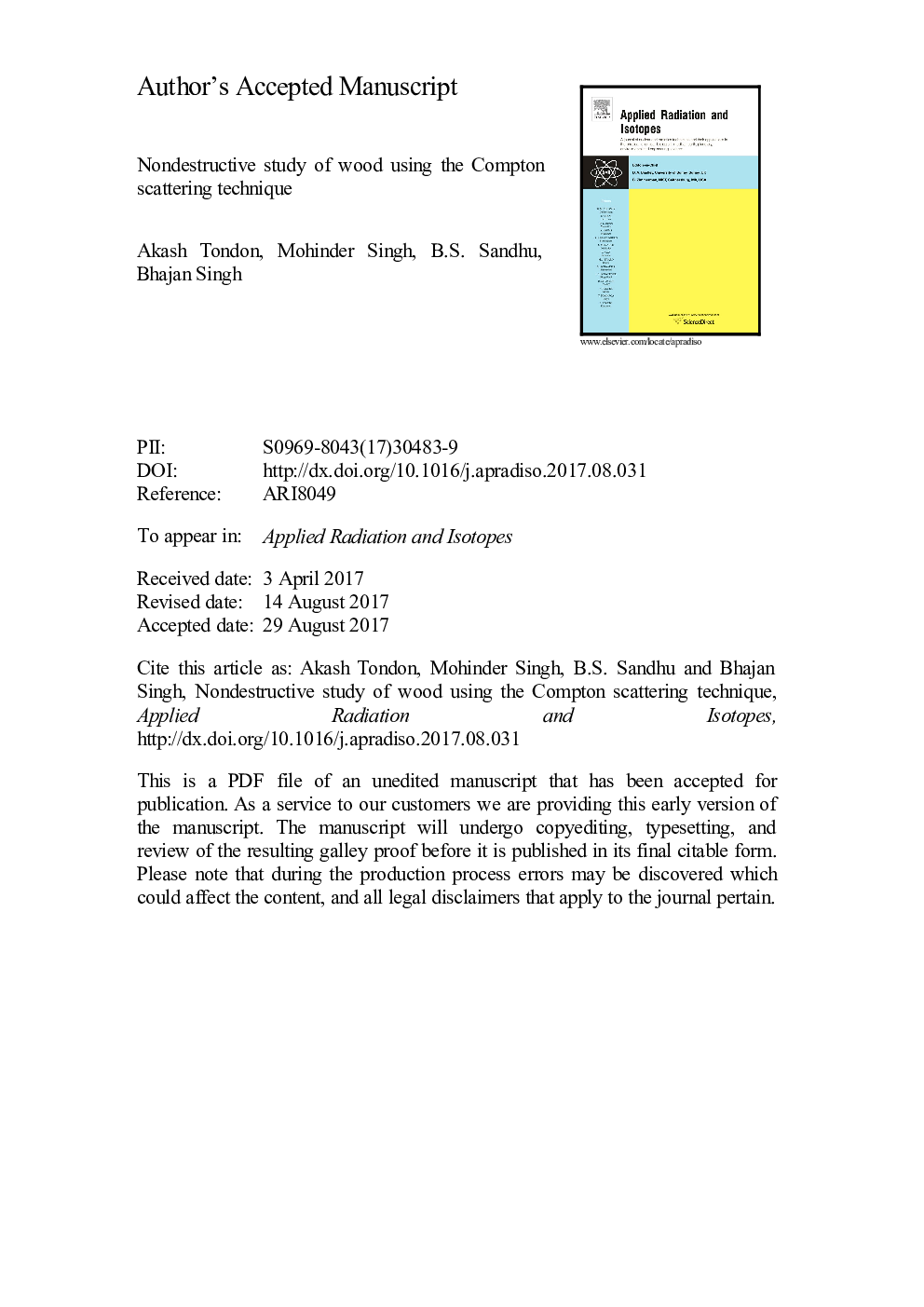| Article ID | Journal | Published Year | Pages | File Type |
|---|---|---|---|---|
| 5497660 | Applied Radiation and Isotopes | 2017 | 33 Pages |
Abstract
A simple nondestructive method is presented in this study to characterize woods having different densities, thus estimating the size and depth of inhomogeneities in given wood samples using the Compton scattering technique (CST). This technique uses a collimated beam of 662-keV energy from 137Cs radioactive source, and the scattered flux is detected by an NaI(Tl) detector. To characterize different wood samples on the basis of their densities, both scattering and transmission experiments were performed. The presence of inhomogeneities such as knots in wood was simulated by drilling cylindrical voids of diameter 9Â mm in the samples and then filling them with a high-density material (aluminum). Furthermore, different sizes of inhomogeneities (Al cylinders) were filled in the wood samples to estimate the depth and size of the inhomogeneity using the CST. A higher linear correlation (R2 ~ 0.96) was found between the scattered intensity and the density of different woods using the CST than that using the transmission (R2 ~ 0.83) method by measuring the density range. An increase of 24.6% in the average scattered intensity was observed at the location where the knot was present, and it was found that an inhomogeneity of the order of ~4Â mm or more could be detected by the CST.
Keywords
Related Topics
Physical Sciences and Engineering
Physics and Astronomy
Radiation
Authors
Akash Tondon, Mohinder Singh, B.S. Sandhu, Bhajan Singh,
